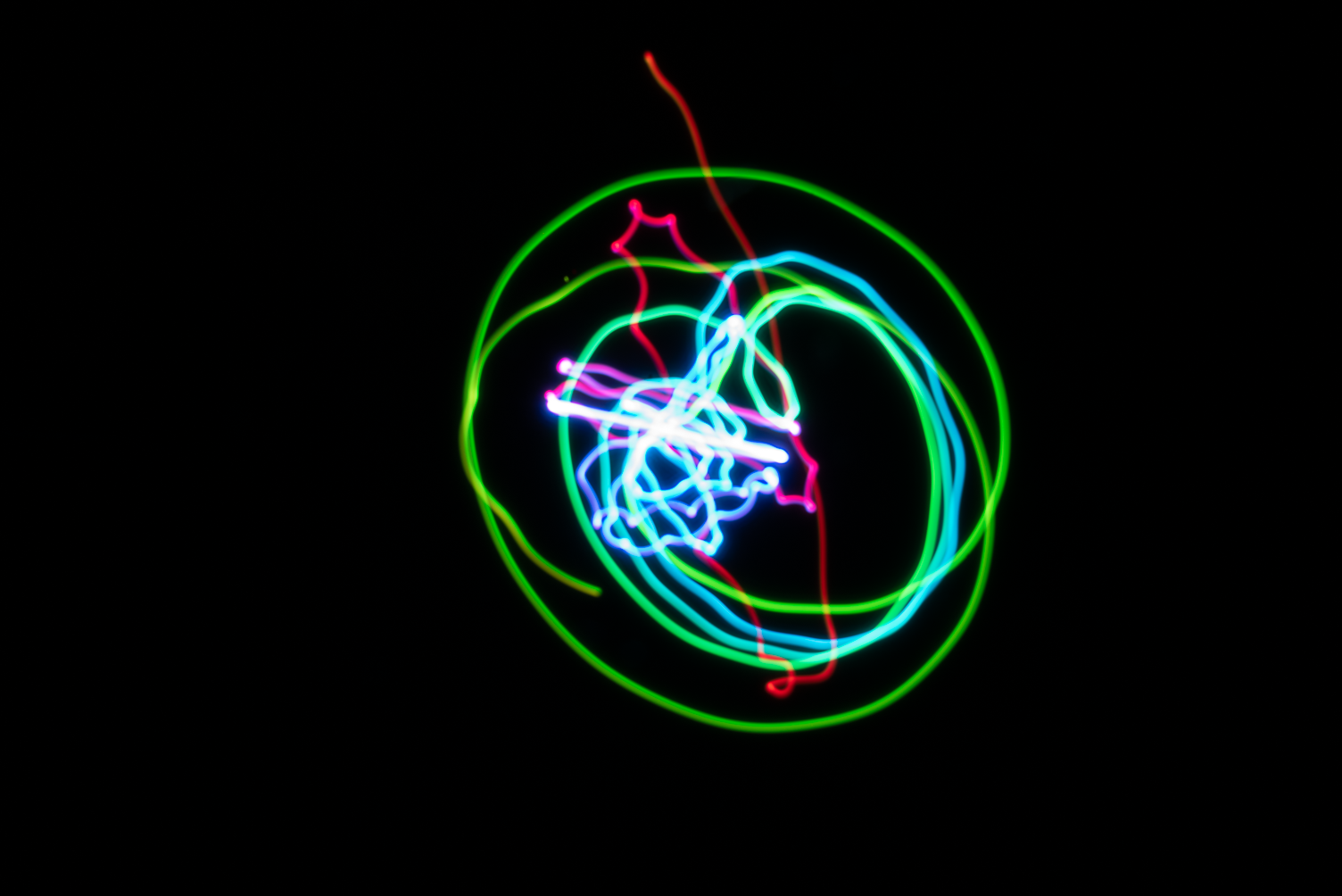Dream Review
Room-sized Pendulum Displays Data Through Color, Experience Parallels Life Cycle
Artist and designer Phil Caridi has created an intriguing representation of time, motion, and chaos through the use of light and a pendulum. Entering the dimly lit room feels like entering a void. Along the perimeter of the room is a black stripe. At the far end of the room there is a pedestal with a number of controls placed on top of it.
Making your way to the control pedestal reveals that the black strip is actually a series of screens and suspended from the center of the room is a small pendulum. Once at the control pedestal the user is confronted with six touchpoints: speed of the motor (a knob), direction of the motor(a toggle switch),and a mode select (a knob) with indications for speed, direction, or velocity of the pendulum, as well as an indicator for chaos.
As the first user of the day, the pendulum lies motionless at the center of the room. Interacting with the speed knob starts a motor, which starts the pendulum in motion, and illuminates the LED. The pendulum is connected to a linkage which is in turn connected to a motor. Input from the control pedestal and the user controls the speed and direction of the motor. The mode selection controls how the color of the RGB LED is mapped. The user has the choice of changing the color based on direction, speed, velocity, and chaos. The first three are straight forward, the pendulum has a sensor that can gather information and then change the color of the LED based on the data. Chaos is a bit harder to understand and will always output something completely different even if all the given data is exactly the same.
A camera seated directly under the pendulum records the movement in a one minute long exposure, when the exposure is finished the resulting image is displayed on the screen directly to the left of the door you entered through. After another minute the first image is moved clockwise one screen and the new image is displayed on the first screen. This process continues, once the first image reaches the 60th screen and is displayed for one minute it will move off the screen being lost forever. As long as the pendulum is in motion a new image will be captured every minute, however, once the motion in the pendulum stops there is no data to produce an image, the LED will switch off, and the remaining images will proceed around the room clockwise until the last image falls off the last screen leaving nothing but the black stripe around the room.
This installation is a powerful statement about the fleetingness of time and the permanence of death. Once the image has traversed its path along the 60 screens and is no longer displayed, there is no record, only memory of that image. The image exists for only 60 minutes ever, the time it takes for the minute hand to travel a clock face. This is a parallel to the cycle of life, for where we start we shall return.




